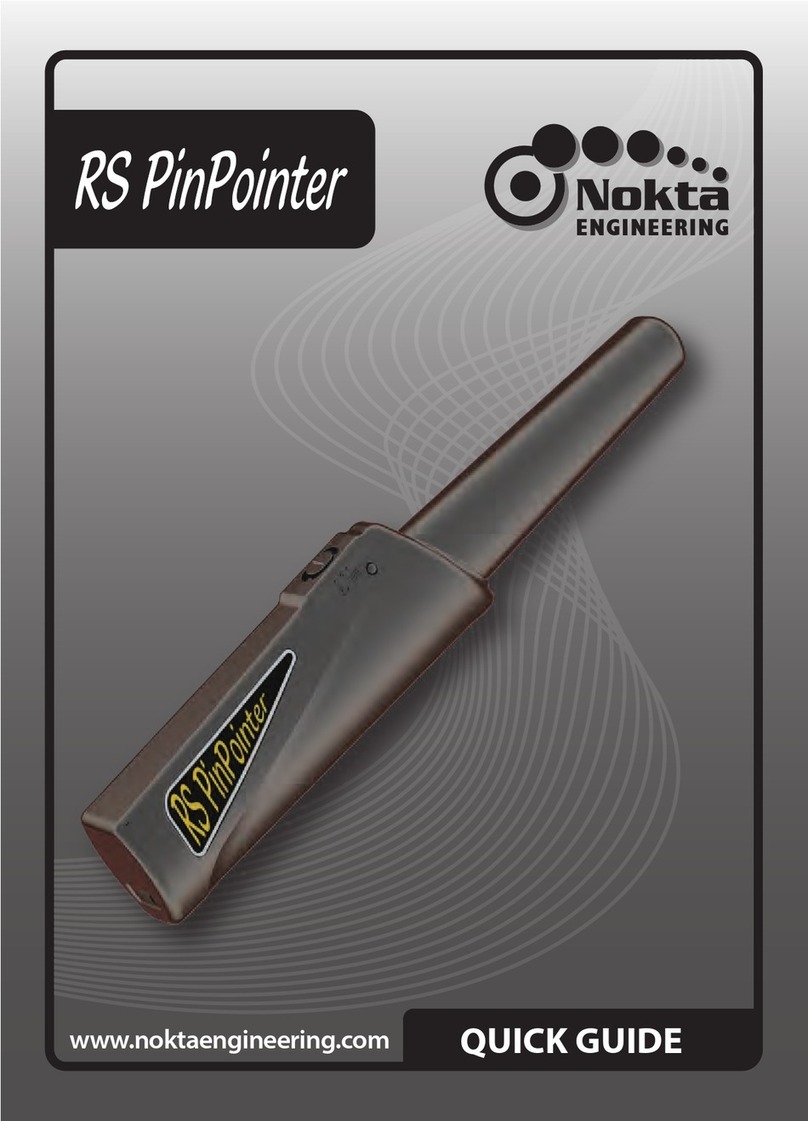WARNINGS
LEGAL WARNINGS
► When using the device, comply with all applicable laws and regulations. Do not use the
device in private premises, historic sites and military zones. Notify the authorities of any
historical or cultural findings.
WARNINGS ABOUT THE DEVICE
► This is a high-tech electronic device. Do not assemble or use the device before reading
the user manual.
► Do not expose the device or the search coil to very hot or cold conditions for extended
periods of time. (Storage Temperature: -20°C (-4°F) / 60°C (140°F))
► Do not immerse the device or its accessories (except the search coil) in water; do not
expose them to extreme humid conditions.
► Protect the device from external impact, especially during transportation.
►The device can only be opened and repaired by authorized service technicians. The
warranty will be voided if the device is opened by you or an unauthorized person.
IMPORTANTIMPORTANT
Do not use the device indoors. The device
will constantly give target signals inside
places like homes where there are many
metals present. Use the device outdoors, in
open fields.
Do not let another detector or an
electromagnetic device come in close
proximity (10m (33ft.)) to the device.
Do not carry any metal objects while using
the device. Keep the device away from your
shoes while walking. The device may detect
the metals on you or inside your shoes as
targets.
For Consumers within the European Union: Do
not dispose of this equipment in general
household waste. The crossed wheeled bin
symbol on this equipment indicates this unit
should not be disposed of in general household
waste, but recycled in compliance with local
government regulations and environmental
requirements.
FCC STATEMENT
This device complies with Part 15 of the FCC Rules. Operation is subject to the
following two conditions: (1) this device may not cause harmful interference,
and (2) this device must accept any interference received, including interferen-
ce that may cause undesired operation.
Page 1




























